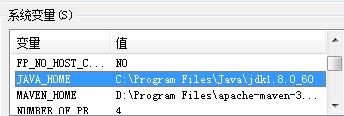可以将文章内容翻译成中文,广告屏蔽插件可能会导致该功能失效(如失效,请关闭广告屏蔽插件后再试):
问题:
I have a java complied package to speak with the https server on net. Running the compilation gives the following exception:
javax.net.ssl.SSLException: Unrecognized SSL message, plaintext connection?
at com.sun.net.ssl.internal.ssl.InputRecord.handleUnknownRecord(Unknown Source)
at com.sun.net.ssl.internal.ssl.InputRecord.read(Unknown Source)
at com.sun.net.ssl.internal.ssl.SSLSocketImpl.readRecord(Unknown Source)
at com.sun.net.ssl.internal.ssl.SSLSocketImpl.performInitialHandshake(Unknown Source)
at com.sun.net.ssl.internal.ssl.SSLSocketImpl.startHandshake(Unknown Source)
at com.sun.net.ssl.internal.ssl.SSLSocketImpl.startHandshake(Unknown Source)
at sun.net.www.protocol.https.HttpsClient.afterConnect(Unknown Source)
at sun.net.www.protocol.https.AbstractDelegateHttpsURLConnection.connect(Unknown Source)
at sun.net.www.protocol.https.HttpsURLConnectionImpl.connect(Unknown Source)
I think this is due to the connection established with the client machine is not secure. Is there any way to configure the local machine or ports in order to connect to the remote https server?
回答1:
I think this is due to the connection
established with the client machine is
not secure.
It is due to the fact that you are talking to an HTTP server, not an HTTPS server. Probably you didn\'t use the correct port number for HTTPS.
回答2:
javax.net.ssl.SSLException: Unrecognized SSL message, plaintext connection?
You should have a local SMTP domain name that will contact the mail server and establishes a new connection as well you should change the SSL property in your programming below
javax.net.ssl.SSLException: Unrecognized SSL message, plaintext connection
props.put(\"mail.smtp.socketFactory.fallback\", \"true\"); // Should be true
回答3:
I got the same error message when I forgot to log in to the company firewall, before performing a POST request through a proxy.
回答4:
I got the same error. it was because I was accessing the https port using http.. The issue solved when I changed http to https.
回答5:
I face the same issue from Java application built in Jdevelopr 11.1.1.7 IDE. I solved the issue by unchecking the use of proxy form Project properties.
You can find it in the following:
Project Properties -> (from left panle )Run/Debug/Profile ->Click (edit) form the right panel -> Tool Setting from the left panel -> uncheck (Use Proxy) option.
回答6:
As EJP said, it\'s a message shown because of a call to a non-https protocol.
If you are sure it is HTTPS, check your bypass proxy settings, and in case add your webservice host url to the bypass proxy list
回答7:
Adding this as an answer as it might help someone later.
I had to force jvm to use the IPv4 stack to resolve the error. My application used to work within company network, but while connecting from home it gave the same exception. No proxy involved. Added the jvm argument
-Djava.net.preferIPv4Stack=true and all the https requests were behaving normally.
回答8:
I was facing this exception when using Gmail.
In order to use Gmail I had to turn ON \"Allow less secure apps\".
This Gmail setting can be found at https://www.google.com/settings/security/lesssecureapps after login the gmail account.
回答9:
It worked for me now, I have change the setting of my google account as below:
System.out.println(\"Start\");
final String username = \"myemail@gmail.com\";
final String password = \"************\";
Properties props = new Properties();
props.put(\"mail.smtp.auth\", \"true\");
props.put(\"mail.smtp.host\", \"smtp.gmail.com\");
props.put(\"mail.smtp.port\", \"465\");
props.put(\"mail.transport.protocol\", \"smtp\");
props.put(\"mail.smtp.starttls.enable\", \"true\");
props.put(\"mail.smtp.starttls.enable\", \"true\");
props.put(\"mail.smtp.socketFactory.class\", \"javax.net.ssl.SSLSocketFactory\");
Session session = Session.getInstance(props,
new javax.mail.Authenticator() {
protected PasswordAuthentication getPasswordAuthentication() {
return new PasswordAuthentication(username, password);
}
});
try {
Transport transport=session.getTransport();
Message message = new MimeMessage(session);
message.setFrom(new InternetAddress(\"myemail@gmail.com\"));//formBean.getString(\"fromEmail\")
message.setRecipients(Message.RecipientType.TO,InternetAddress.parse(\"myemail@gmail.com\"));
message.setSubject(\"subject\");//formBean.getString(
message.setText(\"mailBody\");
transport.connect();
transport.send(message, InternetAddress.parse(\"myemail@gmail.com\"));//(message);
System.out.println(\"Done\");
} catch (MessagingException e) {
System.out.println(\"e=\"+e);
e.printStackTrace();
throw new RuntimeException(e);
}
Though I have enabled SSL and TSL while running program in this link of same post. I spend a lot of time but than I realized and found this link.
And done 2 following steps and setting control in google. :
Now I am able to send mail using above program.
回答10:
if connection is FTPS test:
FTPSClient ftpClient = new FTPSClient(protocol, false);
protocol = TLS,SSL
and false = isImplicit.
回答11:
I got the same issue and it got resolved by setting \"proxyUser\" and \"proxyPassword\" in system properties.
System.setProperty(\"http.proxyUser\", PROXY_USER);
System.setProperty(\"http.proxyPassword\", PROXY_PASSWORD);
along with \"proxyHost\" and \"proxyPort\"
System.setProperty(\"http.proxyHost\", PROXY_ADDRESS);
System.setProperty(\"http.proxyPort\", PROXY_PORT);
Hope it will work.
回答12:
i solved my problem using port 25 and Following prop
mailSender.javaMailProperties.putAll([
\"mail.smtp.auth\": \"true\",
\"mail.smtp.starttls.enable\": \"false\",
\"mail.smtp.ssl.enable\": \"false\",
\"mail.smtp.socketFactory.fallback\": \"true\",
]);
回答13:
In case you are running
- Cisco AnyConnect Secure Mobility Agent
- Cisco AnyConnect Web Security Agent
try stopping the service(s).
Not sure why I got a down vote for this answer. In our corporate network this IS the solution to the issue.
回答14:
Maybe your default cerficate has expired. to renew it through admin console go \"Security >SSL certificate and key management > Key stores and certificates > NodeDefaultKeyStore > Personal certificates\" select the \"default\" alias and click on \"renew\" after then restart WAS.
回答15:
If you\'re running the Java process from the command line on Java 6 or earlier, adding this switch solved the issue above for me:
-Dhttps.protocols=\"TLSv1\"
回答16:
Another reason is maybe \"access denided\", maybe you can\'t access to the URI and received blocking response page for internal network access. If you are not sure your application zone need firewall rule, you try to connect from terminal,command line.
For GNU/Linux or Unix, you can try run like this command and see result is coming from blocking rule or really remote address: echo | nc -v yazilimcity.net 443



